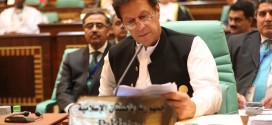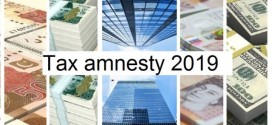For past many decades, several trends have been introduced in international economy.
The changing trends compelled many states to formulate trade-friendly policies with other countries and enter into economic ventures with trading partners or develop new economic partnerships. However, countries like Pakistan and India with conflicting relationship, find it difficult to develop ‘economic partnership’ given the history of long-standing disputes between them. Besides periodic tensions between the two countries owing to the disputes, their economic policies towards each other have a less room for progressive bilateral trade. Recently, there have been continuous calls and efforts made by the economic giants and local traders from Pakistan and India to facilitate direct trade between the two countries. Among other efforts, the South Asian Free Trade Area (SAFTA) agreement was also considered an opportunity to boost bilateral trade and economic partnership between Pakistan and India. The agreement came into effect in January 2006 and has set targets for intra-SAARC (South Asian Association for Regional Cooperation) free trade by 2013.
Structurally, the two countries have diverse economies. There exists a vast difference between the size of two economies and the rate of economic progress and growth in two countries. ‘India has virtually around 100 per cent of the total resources of the region for instance iron ore, uranium, copper, zinc, lead, gold, silver, etc. It has around 90 per cent of resources in coal, crude petroleum, chromium, magnetite and salt. Moreover, the process of industrialisation in India began in 1951. Pakistan’s economy was also flourishing at the remarkable rate till 1958. Unfortunately, Pakistan’s economic growth had been marred by internal political instability, weak democratic structure/system, lack of a strong industrial base, low investments and savings and reliance on external borrowings and remittances. On the other hand, India’s economic performance has largely been steady owing to consistent democratic system, active diplomacy, pragmatic and largely neutral economic and political policies, industrial base and diligent services sector. Nevertheless, their societies and cultural similarities can best serve the purpose of bringing the two economies closer.
A careful analysis of the existing issues related to trade between Pakistan and India establishes a fact that besides periodic tensions, misperception, trust deficit, paranoia and ‘enemy syndrome’ hamper economic regimes between Pakistan and India to facilitate direct trade. From policy perspective, India, for many years followed the policy of economic protectionism. The Indian government still avoids trading (imports) into items where its local manufactures will have to face a tough competition. Similar apprehensions have been expressed by industrial stakeholders in Pakistan.
Another major issue is the granting of MFN (most-favoured nation) status. India has already granted Pakistan the MFN status 16 years ago in 1996. However, Pakistan has always been reluctant to reciprocate in view of the stringent non-tariff barriers (NTBs, which include import quotas, special licences, unreasonable standards for the quality of goods, customs restrictions, export restrictions, export subsidies, countervailing duties, technical barriers to trade, rules of origin, etc.) placed by the Indian government. This act of Pakistan is also viewed as a violation of SAFTA, which requires South Asian states to grant MFN status to each other. Indian government, on the other hand, held the argument that NTBs would be waived following the receipt of MFN status by Pakistan. Moreover, the existing ‘negative list’ of items remains to be an issue in bilateral trade. Currently, the ‘negative list’ consists of 1,209 items. However, Pakistan imports some 1,950 items from India. However, ‘the private sector is allowed to trade in some 322 items only’.
In line with the WTO arrangements Islamabad has decided to phase out the existing negative list reducing it to some 630 items. The officials from Pakistan and India, in 2011, also decided to boost their bilateral trade from 2.7 billion dollars to 6 billion dollars within next three years. The Pakistan government has also announced to grant MFN status to India by the end of this year.
Economic ties between Pakistan and India are still sensitive and are pegged to intractable political issues. There is no denying the fact that a number of efforts have been made to facilitate economic cooperation between the two countries. Enhanced economic cooperation is also believed to be a way to waive trust deficit and paranoia and ultimately establishing peace between Pakistan and India. Also, regional cooperation and success of multilateral arrangements at SAARC level are associated with the bilateral economic cooperation between the two countries. Moreover, private sector in both the countries has been proactive in contributing to improve trade ties and waive tariff/non-tariff barriers. Yet, the onus lies on the two governments. In view of the benefits of economic cooperation the two governments are required to demonstrate an unrelenting political will to further their bilateral economic ties. Some urgent measures in this regard may include liberalization of visa regimes, granting of MFN status to India by Pakistan and removal of NTBs by India.
 Jahangir's World Times First Comprehensive Magazine for students/teachers of competitive exams and general readers as well.
Jahangir's World Times First Comprehensive Magazine for students/teachers of competitive exams and general readers as well.


